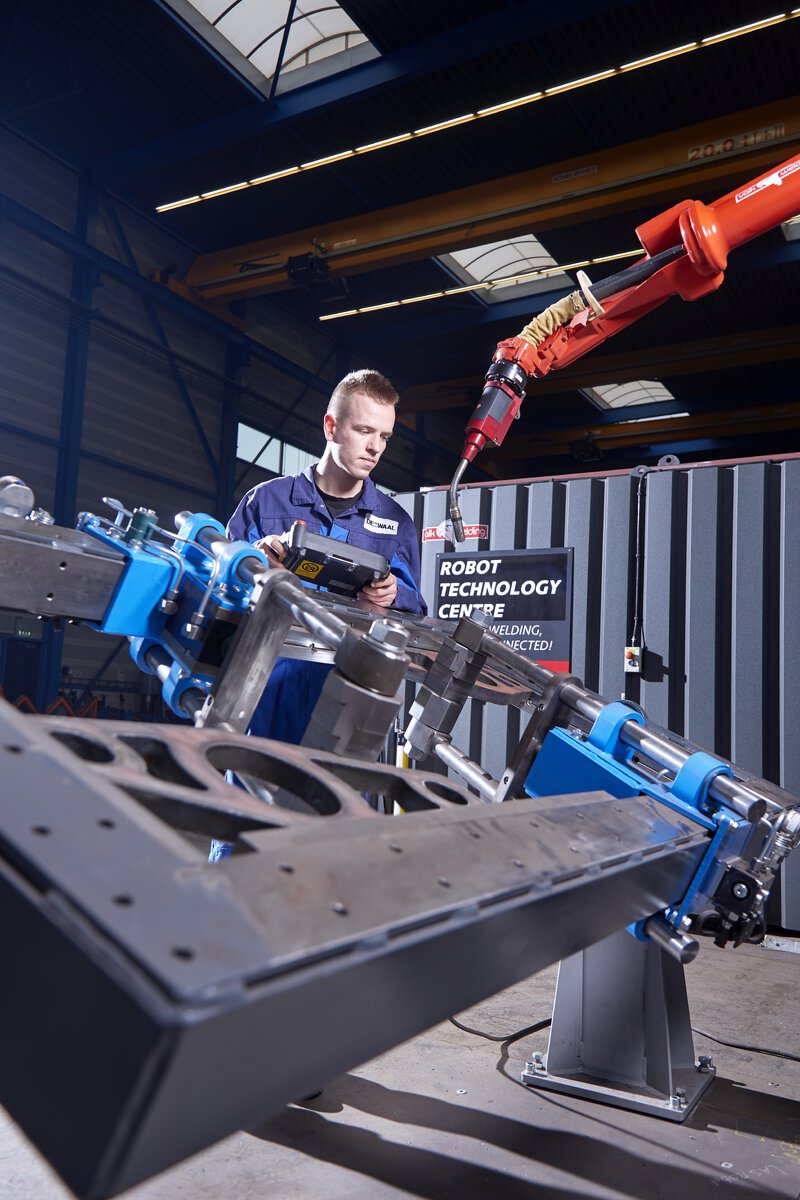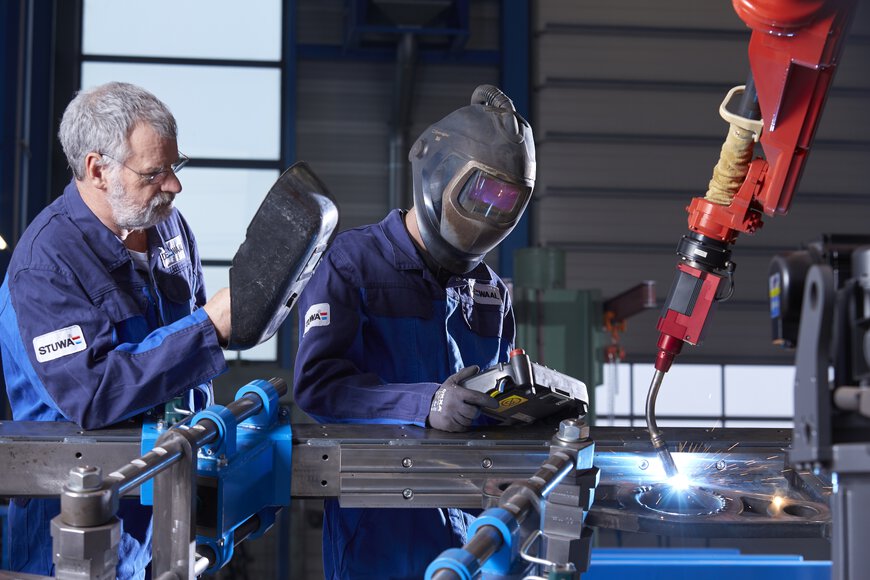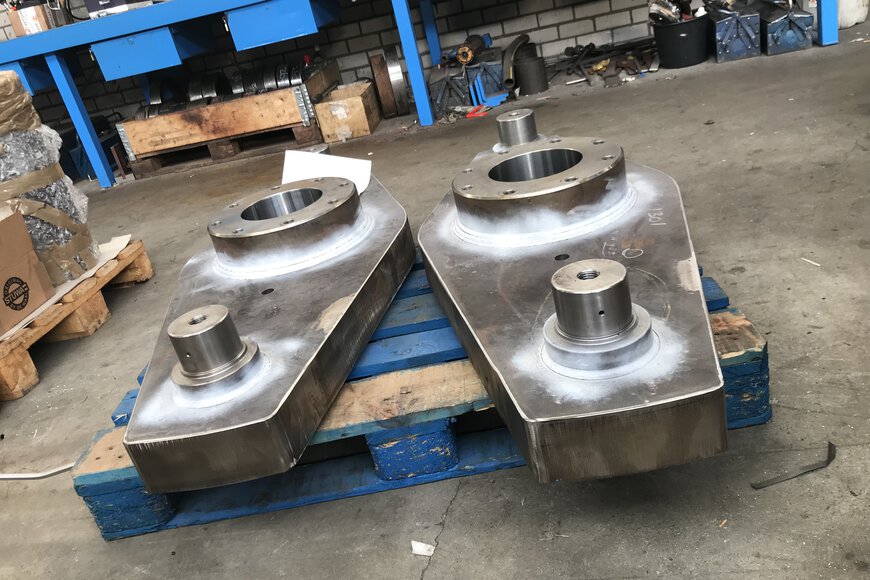Towards a final concept
To make the use of the welding robot profitable, a larger installation is necessary, in which the welding robot operates in multiple workstations. For that, several concepts are being made at this moment, based on a welding robot on an XYZ gallows concept and a welding robot on a portal construction. One of these concepts will be built before the finishing of the ‘TIMA’ project at the end of this year. Mark van Keulen: ‘’Valk Welding is the only partner that is competitive enough to realize such projects, and which is unique with its software development and welding robot automation.’’
Increasing Capacity
With the automation project, De Waal can implement a capacity increase, so it will not be needed to outsource part of the production anymore. ‘’This large innovation goes further than just a financial consideration, but it is mainly investment in new technology with which we can make big steps for the future. This year, we do exist for 80 years and we are headed towards the hundredth anniversary as an innovative company,’’ Johan Verlaan looks ahead.
www.dewaalbv.nl








